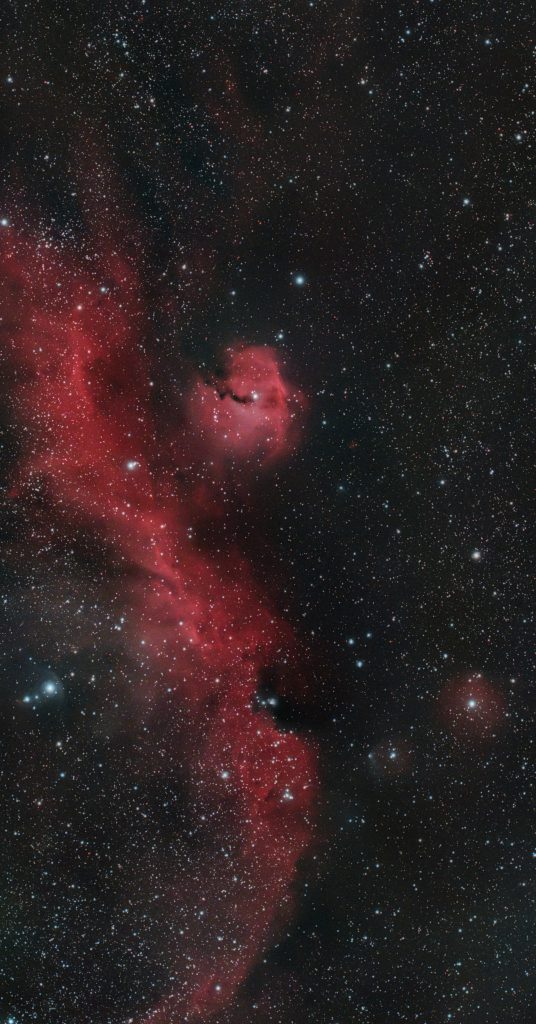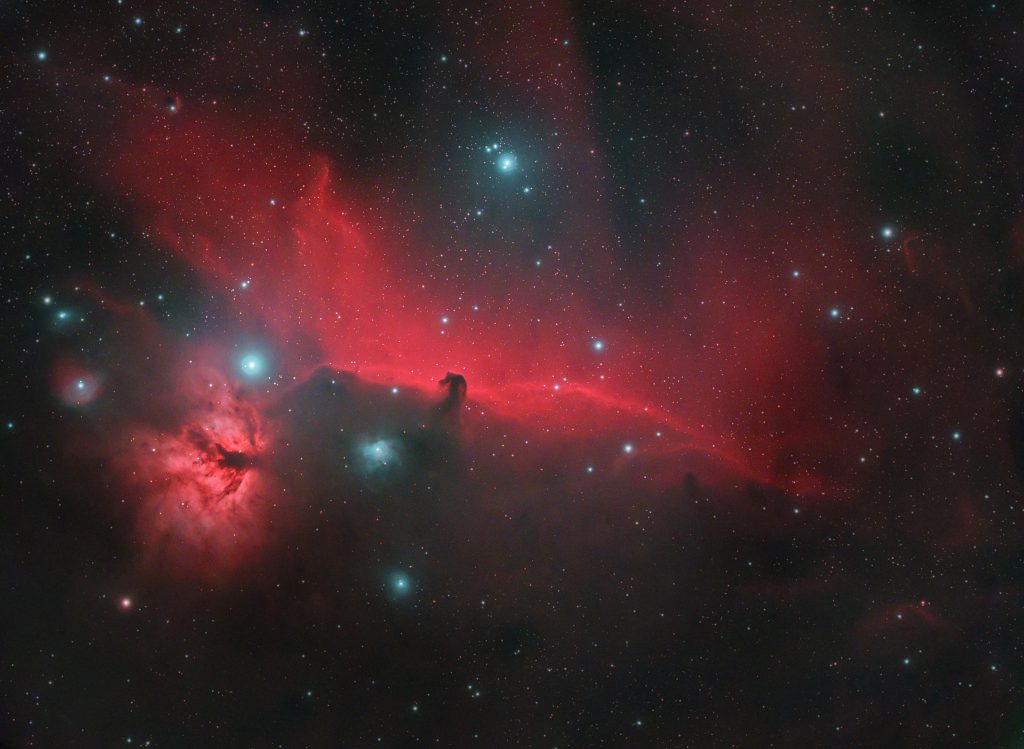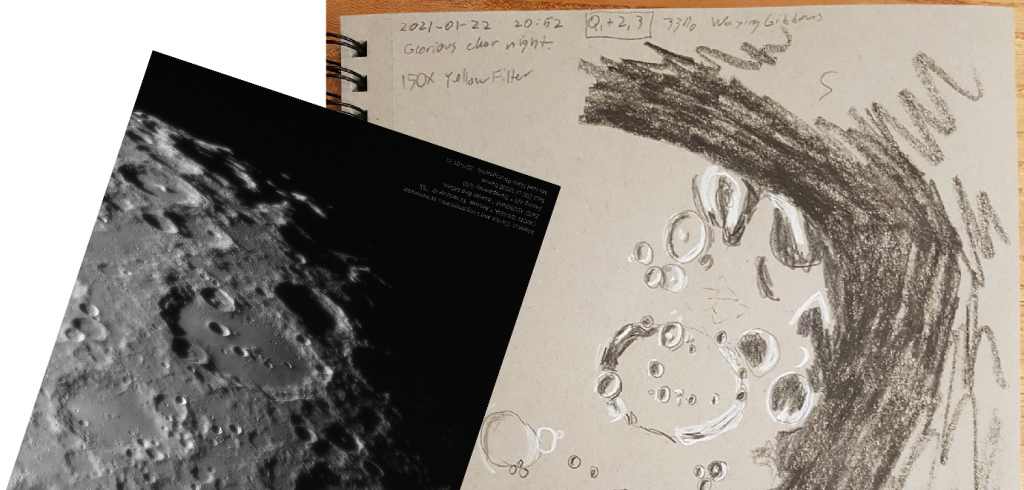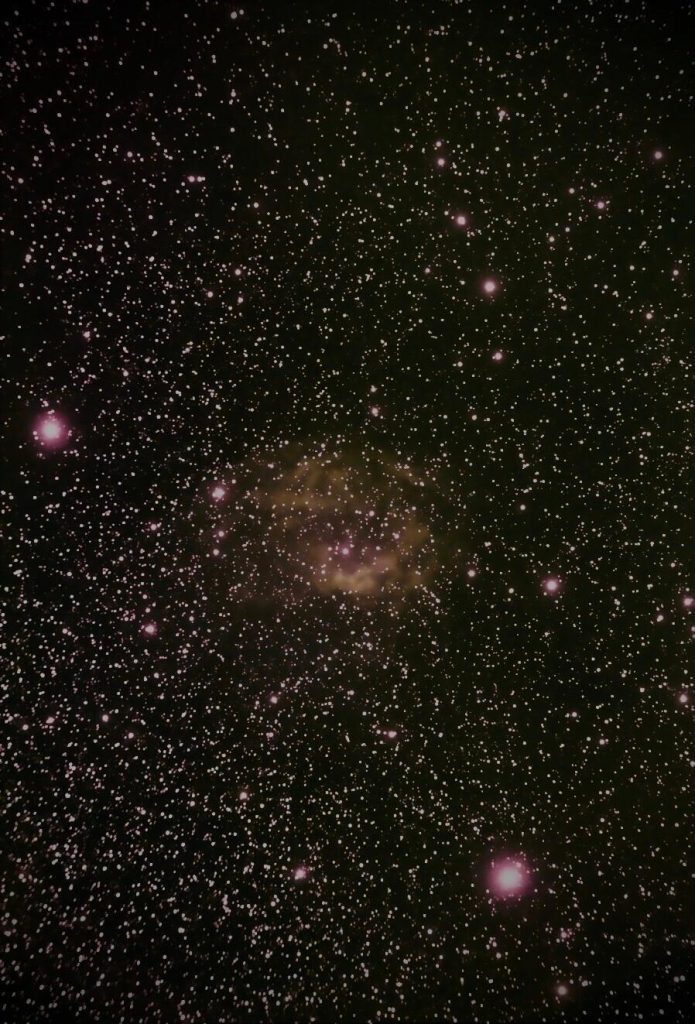Meeting transcript video
Introduction to Amateur Astronomy – Part 1: Our Place Among the Infinities – an unlisted video by the Kalamazoo Astronomical Society
Some Successful Urban Astrophotography – Dan Posey
Despite the glare of car dealerships, the rumble of traffic and polar alignment challenges Dan Posey persevered and obtained remarkable results.

This is 4h25m (75x3m and 80x30s) of exposures with my Askar FRA600 and Canon Ra at iso 1600 using a Hutech NB1 filter from downtown. I calibrated with bias and flat frames and stacked/processed in Pixinsight.

I managed to capture another three hours of exposure on the Horsehead using a longer dew shield made out of some parcel envelopes to stop flaring from the car dealership lights.
This is 5h45m of 3 minute frames (115x3m) from our downtown balcony captured on January 16 and 18 2021 using an Askar 108mm, Canon Ra at iso 800 on the first night and 1600 the second night, and a Hutech NB1 filter.
The Crater Clavius by Pen and Pixel – Randy Enkin & Mike Nash

This image of the Crater Clavius was taken by Mike Nash within an hour of Randy Enkin’s sketch of the same object. There is an amazing correspondence between the features and shadows drawn by Randy and the image captured by Mike.
Edmonton RASCals Go Deep: relayed by Dave Robinson

Abdur writes: I decided to image the faint Leo Quartet of galaxies in Leo. This was a target that I had wanted to image for many years now but it is a difficult one so I decided to keep learning and improving before attempting it. This group is also known as Hickson 44 (after Canadian astronomer Paul Hickson). The four gravitationally linked galaxies are about 100 million light years away. The brightest galaxy in the center is NGC3190 and the S shaped spiral is NGC3187. The bright elliptical at the top left is NGC 3193 and the galaxy on the bottom right is NGC3185. These galaxies are between 57,000 and 100,000 light years across and are fairly small at an angular size of 3.5-4.4 arc minutes. Their magnitudes range from 10.88 to 13.44. In the full size image, there are hundreds of background galaxies visible with many of them being up to 2.9 billion light years away. For this image, I took 1 hour and 34 minutes of 30s subs with the asi1600mm and my C11 Edge at F2. This is a center crop from the full size image. The images were stacked in DSS and processed in Pixinsight.

Abdur writes: The Medusa Nebula is also known as Abell 21 and Sharpless 2-274. It was only discovered in 1955 and classified as a planetary nebula in the 1970s. It is quite large at 10 arc minutes in diameter but has a very low surface brightness. For this image, I took 1 hour and 18 minutes of 30s subs with the asi1600mm and my C11 Edge at F2.

Arnold writes: I imaged this ‘bright’ (v=+10.0) and medium-sized (30.0’ x 15.0’) found between the red giant Betelgeuse and the border of Gemini. Lower’s Nebula is an H-II region on the border of the galactic region between the Orion and Perseus arms. Because of the more popular objects in Orion, this nebula is rarely shown in a list of DSO’s in this area of the sky. It was discovered by Harold Lower and his son Charles in 1939. My 2-degree fov image below is shown with the nearby 4th magnitude stars: Nu Orionis (lower right) snd f1 Orionis (upper left):